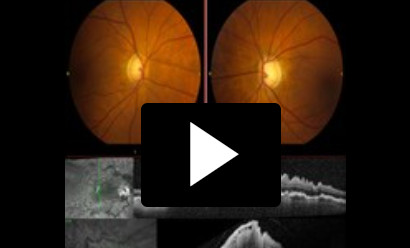 | Low Tension Glaucoma
JD Hammer, MD
Hypotony after Minimally Invasive Glaucoma Procedures
Tyler M. Kaplan, MD
Recorded 10.18.2021
Link to Purchase and Claim Credit | - Identify features associated with low tension glaucoma
- Recognize the vascular hypothesis and how ocular perfusion pressure relates to low tension glaucoma
- Compare treatment options for low tension glaucoma
- Describe the mechanisms of MIGS
- Discuss the differential for hypotony after MIGS
- Identify surgical techniques to address hypotony after MIGS
|
 | The Process of Quality
Timothy W. Olsen, MD
A Classic Case of Von Hippel Lindau Disease
Heidi Dahl, MD
Recorded 10.11.2021
Link to Purchase and Claim Credit | - Assess Existing Quality Standards
- Apply Local Quality Standards
- Critique Alternative Options
- Recognized the clinical manifestations of VHL disease
- Describe the pathogenesis of the VHL disease
- Understand how treatment methods of retinal hemangioblastoma vary with size and location of tumor
|
 | Post Phacoemulsification Endophthalmitis Intracameral Antibiotic Prophylaxis: What Do I Need To Know in 2021?
Michael Mahr, MD
Sixty Years of Myopia and High Myopia Prevalence Trends in Olmsted County
Prashant Tailor, MD
Recorded 10.4.2021
Link to Purchase and Claim Credit | - Assess and apply current evidence regarding intracameral antibiotic prophylaxis for post-phacoemulsification endophthalmitis
- Identify intracameral cefuroxime and moxifloxacin dosing, dilution, and resistance issues in 2021
- Identify the temporal trends of myopia and high myopia in Olmsted County
- Summarize gender and racial differences of myopia and high myopia in Olmsted County
- Contrast myopic trends in Olmsted County vs other longitudinal population-based studies
|
 | Advances in Retinopathy of Prematurity Diagnosis and Management
Brittni A. Scruggs, MD, PhD
Association of Changes in Optical Coherence Tomography Metrics with Changes in Refractive Error in Patients with Neovascular Age-Related Macular Degeneration in the Comparison of Age-related Macular Degeneration Treatments Trials (CATT)
Matthew R. Starr, MD
Recorded 9.27.2021
Link to Purchase and Claim Credit | - Recall the major changes to the International Classification of Retinopathy of Prematurity (ICROP) in 2021
- Summarize the main uses of optical coherence tomography in retinopathy of prematurity (ROP) screening
- Recognize the importance and challenges of artificial intelligence (AI) for improved detection of ROP
- Identify patients with age-related macular degeneration that may receive updated spectacle correction
- Recognize the location of fluid within the retina that contributes most to refractive error shift when treated with anti-VEGF injections
|
 | Vision Loss, Behavioral Changes, and Overlooking in Young Girl
Michael C. Brodsky, MD
Oculodermal Melanocytosis, Melanocytoma, and Melanoma
M. Ryan Claxton
Recorded 9.13.2021
Link to Purchase and Claim Credit | - To understand the clinical significance of overlooking
- To review the diagnostic evaluation of Batten disease
- To consider the differential diagnosis of Batten disease
- Recognize the clinical and pathologic features of oculodermal melanocytosis and melanocytoma
- Review the clinical significance of oculodermal melanocytosis and melanocytoma
- Identify molecular alterations associated with ocular neoplasms
|
 | Electronic Health Record Satisfaction 2021
Amir R. Khan, M.D.
Surgical Management of Chronic Chemosis
Leo J. Maguire, M.D.
Recorded 8.30.2021
Link to Purchase and Claim Credit | - Identify issues leading to dissatisfaction with the EHR
- Identify areas that can improve satisfaction with the EHR
- Identify how the EHR affects patient care
- Compare chronic noninflammatory chemosis to acute chemosis
- Describe the surgical technique of Tenonectomy for the treatment of chronic noninflammatory chemosis
- Describe the rationale for ordering an orbital CT prior to tenonectomy for chronic noninflammatory chemosis
|
 | IOP Variability and Glaucoma
Arthur J. Sit, S.M., M.D.
Punctal Occlusion and Glaucoma Treatment with Topical IOP Lowering Agents
Jodi M. Moore-Weiss, O.D.
Recorded 8.23.2021
Link to Purchase and Claim Credit | - Identify the circadian pattern of IOP variations
- Recognize the clinical significance of IOP variations
- Give examples of emerging continuous IOP measurement technologies
- Examine the literature surrounding patient adherence and correct use of prescribed topical medications for glaucoma
- Recognize the limitations of the current research as it applies to current clinical practice
- Consider if placing punctal plugs would be of benefit for enhancing topical treatment of topical glaucoma medications and reducing adverse reactions
|
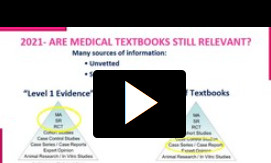 | AAO's Basic and Clinical Science Course (BCSC): A Unicorn Among Medical Textbooks
M. Tariq Bhatti, M.D.
Recorded 8.16.2021
Link to Purchase and Claim Credit | - Recall the history of the BCSC
- Recognize the process of a major revision
- Review the advantages of the BCSC
|
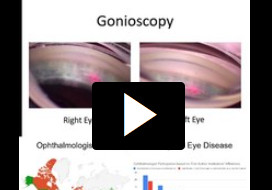 | Ophthalmologists' Role in Multidisciplinary Thyroid Eye Disease (TED), a Systematic Review
Yanhan Ren
Optimizing Patient Outcomes with Primary Angle Closure Disease (PACD)
Richard D. Ten Hulzen, M.D.
Recorded 8.09.2021
Link to Purchase and Claim Credit | - Identify and examine primary angle closure disease (PACD)
- Differentiate various potential causes of PACD
- Treat PACD and optimize patient outcomes
- Identify ophthalmologists’ role in multidisciplinary Thyroid Eye Disease (TED) research
- Compare geographic variations in TED
- Evaluate ophthalmologists’ participation in multidisciplinary research and global
|
 | Ophthalmic side effects of systemic anticancer agents
Lauren A. Dalvin, M.D.
When Leaves Attack: Plants, Weeds and the Corneal Endothelium
Marybeth K. Farazdaghi, M.D.
Recorded 8.02.2021
Link to Purchase and Claim Credit | - Identify ophthalmic side effects of select anticancer agents
- Determine how to approach ophthalmic side effects in the context of systemic cancer care
- Identify plants commonly associated with ocular toxicity
- Describe the possible mechanism of ocular oleander toxicity
|
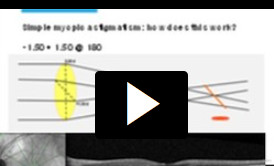 | What is the ideal postoperative refractive error? OR Is emmetropia all that it's cracked up to be?
Keith Baratz, M.D.
CNV: Active or Dormant?
Saumya M. Shah, M.D.
Recorded 7.26.2021
Link to Purchase and Claim Credit | - Review the concept of “pseudo-accommodation
- Revise your assessment of patients’ refractive needs prior to cataract surgery
- Apply the concept of “pseudo-accommodation” to surgical planning
- Describe a subtype of exudative age-related macular degeneration and summarize the current literature associated with it
- Review the management strategies for this particular subtype
|
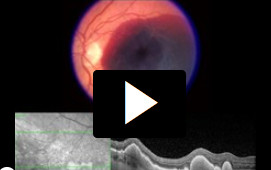 | Management of Submacular Hemorrhage
Sophie J. Bakri, M.D. FISH For It
Ali Raied Salman / PGY-3
Recorded 7.19.2021
Link to Purchase and Claim Credit | - Describe causes of submacular hemorrhage
- Describe indications for surgery for submacular hemorrhage
- Describe surgical techniques for submacular hemorrhage displacement
- Identify the basic characteristics of intraocular lymphoma
- Describe the differences in B-Cell and T-Cell intraocular lymphoma
- List the most common diagnostic tools used to identify intraocular lymphoma
|
 | White Dot Syndrome?
Wendy M. Smith, M.D. The Chicken or the Egg
Blake Fortes, M.D.
Recorded 7.12.2021
Link to Purchase and Claim Credit | - Discuss the differential diagnosis of one of the white dot syndromes
- Identify typical and atypical features of a white dot syndrome
- Identify the utility of multimodal imaging in the diagnosis and management of a white dot syndrome
- Review the differential diagnosis for optic disc edema and vitreitis.
- Review the diagnosis, and management of CRMP5 optic neuropathy.
- Discuss the associated systemic manifestations of CRMP5 optic neuropathy.
|
 | The Scope of Scleral Lens Research
Cherie Nau, O.D.
Muriel Schornack, O.D.
Recorded 6.28.2021
Link to Purchase and Claim Credit | - Discuss the origins of the SCOPE study team
- Summarize findings of SCOPE research projects
- Identify topics of future scleral lens-related investigations
|
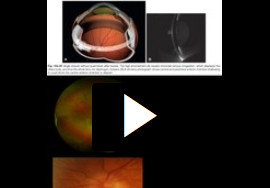 | Idiopathic Intracranial Hypertension - Morbidity and Mortality Study
Francisco R. Sanchez Moreno, M.D. Choroidal Vasculopathy in Chorioretinal Coloboma
Ankur Mehra, M.D. The Effect of Scleral Buckle Surgery on Aqueous Humor Dynamics and Ocular Biomechanics
Lance Lyons, M.D.
Recorded 5.24.2021
Link to Purchase and Claim Credit | - Recognize the population profile of patients diagnosed with idiopathic intracranial population in Olmsted County.
- Identify risk factors, presenting symptoms and prognosis of patients diagnosed with idiopathic intracranial hypertension.
- Discover the average length of treatment, type of treatment and potential treatment complications of patients diagnosed with idiopathic intracranial hypertension in Olmsted County.
- Recognize some of the common complications of chorioretinal colobomas
- Recognize how intraocular pressure responds to changes in ocular rigidity and outflow facility
- Explain the effects of scleral buckle surgery on ocular biomechanics and aqueous humor dynamics
|
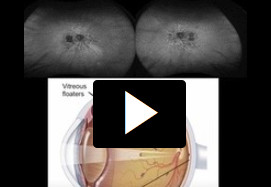 | QI Project - Pentosan Polysulfate Maculopathy
Aaron Fairbanks, M.D.
Trevor Kindle, M.D. Efficacy of a patient education video in comparison to standard physician discussion
Minjun Hur, M.D.
Maria D. Garcia, M.D.
Recorded 5.17.2021
Link to Purchase and Claim Credit | - Describe exam and imaging findings of pentosan polysulfate maculopathy
- Describe patient risk factors for developing pentosan polysulfate maculopathy
- Describe a screening process for patients at risk for developing pentosan maculopathy
- To determine the patient awareness and knowledge of floaters and flashing lights
- To discuss the effectiveness of a patient education video on floaters and flashing lights
|
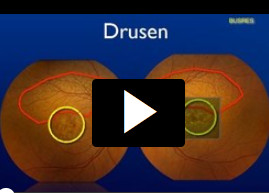 | Reticular Pseudodrusen & Coronary Artery Dz
Timothy W. Olsen, M.D.
Recorded 5.3.2021
Link to Purchase and Claim Credit | - Recognize Reticular Pseudodrusen
- Compare AREDS & MGS
- Appraise the Association to CADz
|
 | Telehealth for Low Vision: Our Experience 2020-2021
Alaina Softing Hataye, O.D. Masked Analysis of the Clinical Utility of Commercially Available Antiretinal and Anti-optic Nerve Antibody Testing
John Chen, M.D., Ph.D.
Recorded 4.5.2021
Link to Purchase and Claim Credit | - Recall the estimated access to low vision rehabilitation care in the United States.
- Summarize the feasibility as discussed in the literature, for low vision telemedicine.
- Describe when it is appropriate to offer telemedicine for low vision patients
- Describe the differential diagnosis of a ring scotoma
- Review the features of autoimmune retinopathy
- Recognize the limitations of current commercially available retinal antibody testing
|
 | Ptosis Repair Outcomes after Glaucoma Surgery
Lilly H. Wagner, M.D. Fundamental Concepts of Macular Hole Repair
Raymond Iezzi, M.D., M.S.
Recorded 3.22.2021
Link to Purchase and Claim Credit | - Review why macular holes are not idiopathic
- Review the principles of macular formation and repair
- Review emerging concepts in macular hole repair
- Review safety concerns for ptosis repair in patients with history of glaucoma surgery
- Identify risk factors for failure of ptosis repair in patients with history of glaucoma surgery
- Determine specific considerations for patients with ptosis and glaucoma drainage device
|
 | Thyroid Eye Disease Update: Teamwork, Teprotumumab
Elizabeth Bradley, MD, MHS Chasing the Rebound
Bryce Aul, MD
Recorded 3.8.2021
Link to Purchase and Claim Credit | - Describe the structure of the Mayo Clinic Thyroid Eye Disease Clinic
- Describe the benefits and risks demonstrated in phase III clinical trials for teprotumumab
- Summarize the early Mayo Clinic experience with teprotumumab
- Identify the most common indication for optic nerve sheath fenestration
- Give example of potential complications to optic nerve sheath fenestration
- Summarize the differences in outcomes and complications between optic nerve sheath fenestration, CSF shunting, and venous sinus stenting.
|
 | Management of Dislocated IOLs
Sanjay V. Patel, MD Congenital Cataract Closure
Kristi Y. Wu, MD
Recorded 3.1.2021
Link to Purchase and Claim Credit | - Identify different causes of IOL dislocation
- Describe the approach to evaluating patients with dislocated IOLs
- Recognize different surgical approaches for dislocated IOLs
- Identify the historical evolution of surgery for congenital cataracts
- Recognize angle closure in aphakic and pseudophakic patients
|
 | Pediatric Keratoconus
Emily M. Witsberger, MD Corneal Grafting
Armin Garmany
Recorded 2.22.2021
Link to Purchase and Claim Credit | - Recognize structural and epidemiologic differences between pediatric and adult patients with keratoconus
- Compare rates of treatment failure and disease progression between these two groups
- Identify the need for earlier detection and close monitoring of pediatric keratoconus
- Discuss potential factors that contribute to increased risk of corneal grafting post glaucoma drainage device (GDD)
- Estimate risk of corneal grafting following GDD implantation over time in pediatric and adult population
|
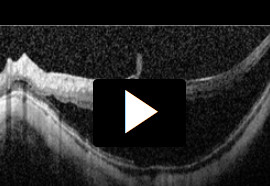
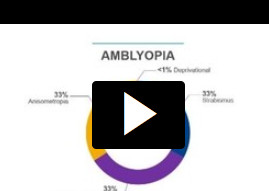 | Distorted vision & “lines are curvy”
Robert Funk, MD Amblyopia
Tomo Yamada, OD
Recorded 2.15.2021
Link to Purchase and Claim Credit | - Understand the pathophysiology of Pathological Myopia
- Recognize key exam findings in Pathological Myopia
- Understand the trend in prevalence of High Myopia
- Recall approaches to amblyopia treatments
- Summarize rationale for currently recruiting amblyopia study
- Identify patients who may be eligible for this study
|
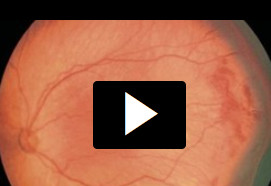
 | Anterior segment ischemia after laser for retinopathy of prematurity previously treated with anti-vascular endothelial growth factor
Brian Mohney, MD Using the Artisan Aphakic Lens in Children
Erick Bothun, MD
Recorded 2.1.2021
Link to Purchase and Claim Credit | - Identify anterior segment complications observed in premature infants treated for retinopathy of prematurity
- Recognize potential risk factors for developing vision-threatening anterior segment ischemia (ASI) among retinopathy of prematurity patients treated with anti-VEGF followed by laser photocoagulation
- Review the options for IOL insertion in an aphakic eye lacking capsular support
- Review the technique of inserting an Artisan Aphakic IOL
- Review the known risks to using the Artisan Aphakic IOL in children
|

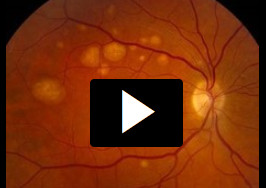 | Metabolic Syndrome and the Aging Retina
Gavin Roddy, MD Eggcentric Fundus Lesions
Saumya Shah, MD
Recorded 1.25.2021
Link to Purchase and Claim Credit | - Review the associations of metabolic syndrome and glaucoma
- Review the associations of metabolic syndrome and age-related macular degeneration
- Review possible mechanisms of cellular injury common to metabolic syndrome, glaucoma, and age-related macular degeneration
- Describe findings of vitelliform lesions
- Identify typical causes of genetic vitelliform lesions and acquired/atypical etiologies of vitelliform lesions
|
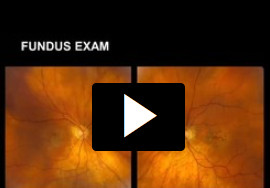
 | Hiding in Plain Sight: PPS Maculopathy
Andrew Barkmeier, MD Chorioretinal Disorders of Preeclampsia/E-clampsia
Ali Salman, MD
Recorded 1.18.2021
Link to Purchase and Claim Credit | - Recognize clinical exam findings in PPS maculopathy
- Interpret retinal imaging characteristics of PPS maculopathy
- Describe the risk factors for PPS maculopathy
- Identify the basic pathophysiology of eclampsia/preeclampsia as it relates to the eye
- Describe some of the retinal and choroidal causes of vision loss that may develop during eclampsia/preecampsia
- Review management and considerations of the above pathologies
|

 | The Art of Prescribing Magnification
Vivien Wing Yip, MD The Great Imitator
Blake Fortes, MD
Recorded 1.11.2021
Link to Purchase and Claim Credit | - Understand optics of handheld magnifiers, stand magnifiers and microscopes
- Calculate the equivalent power needed for reading
- Determine how to prescribe magnification based on patients’ needs and physical limitations
- Describe the differential diagnosis of intermediate uveitis
- Review the ocular manifestations of syphilis
- Summarize the management of syphilis
|

 | Secondary IOL placement in children
Eric Kim, MD A case of Painless Proptosis
Marybeth Farazdaghi, MD
Recorded 1.4.2021
Link to Purchase and Claim Credit | - Identify important factors to be considered for secondary intraocular lens (IOL) placement in children
- Recognize the role of IOL optic capture in preventing visual axis opacification in children
- Review the differential diagnosis of proptosis in an adolescent patient
- Discuss the characteristics and management of juvenile psammomatoid ossifying fibroma
|

 | Sarcoidosis
Ankur Mehra, MD Recurrent Painful Diplopia
Francisco Moreno Sanchez, MD
Recorded 12.7.2020
Link to Purchase and Claim Credit | - Understand the presentation and diagnosis of ocular sarcoidosis
- Identify possible treatment options for ocular sarcoidosis
- Integrate the differential diagnosis of painful ophthalmoplegia
- Identify the different etiologies of recurrent cranial nerve palsies
- Review the International Classification of Headache Disorders and its application to ophthalmological entities
|
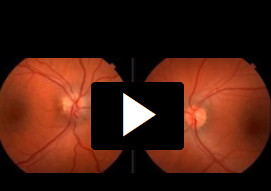 | Unilateral Vision Loss: Optic Neuritis or a Masquerade
Kevin Chodnicki, MD
Recorded 11.30.2020
Link to Purchase and Claim Credit | - Discuss the differential diagnosis of unilateral optic disc edema
- Describe the difference between a 'typical' and 'atypical' optic neuritis
- Summarize the usual presentation of optic nerve sheath meningiomas and how that may be altered in pregnancy
|





































 Accreditation Statement
Accreditation Statement
 Facebook
Facebook X
X LinkedIn
LinkedIn Forward
Forward